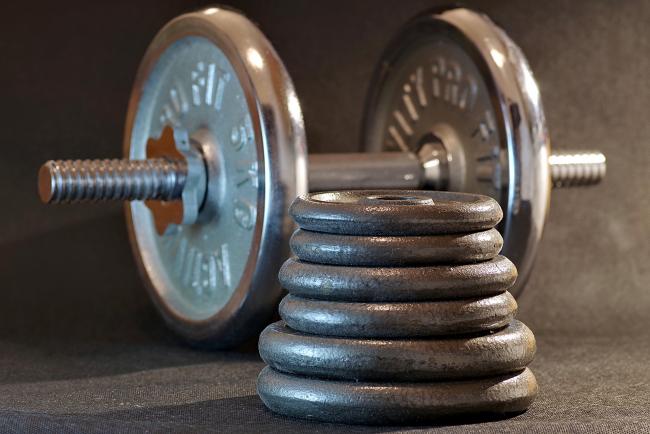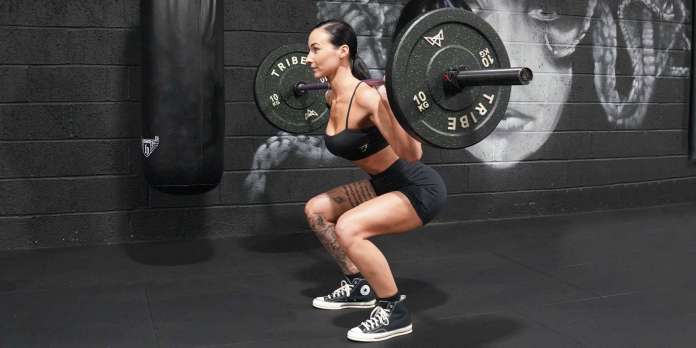
7 Things You Should Know About Matcha
February 2, 2021
The Difference Between Strength and Power for Workouts
March 1, 2021When it comes to resistance training, you can never be too diligent about proper form. From preventing injury to effectively targeting the working muscles, lifting correctly is the most important part of weight training. And whether you’re a newbie to the weight room or you’re a seasoned gym rat, we could all use a bit of brushing up on our form now and then.
That’s why we turned to UK-based trainer Lisa Fiitt, founder of the Strong & Sxy app, for some of the most commonly mis-performed exercises, and how to correct them.
Deadlift
Common mistakes
Arching or rounding the back is really common with this exercise—probably because it feels natural. But doing so will place excess pressure and stress on the back, and it should be avoided. It’s also totally natural to want to watch yourself in the mirror, but this encourages hyperextension of the spine and neck.
Many people use a squat-like position on the descent and ascent, but as the deadlift is a hip-hinge movement, those hips should be pushed back.
Corrections
First, choose between a mixed or overhand grip.
Use a shoulder-width grip and hold the bar just outside the knees. Hinge your hips by pushing them back.
Bend your knees until your shins touch the bar. Keep them parallel. Lift your chest and keep the spine neutral. Ensure your head is in a neutral position by looking forwards.
Keep your abs braced throughout the entire movement to help maintain a strong, neutral spine.
Cable Row
Common mistakes
Many people make the error of rounding the top of their back and pulling the cable row with their biceps. As this exercise is intended to focus on the lats and work the back muscles, you don’t want this! Your biceps, triceps, and forearms should only act as dynamic stabilizers.
Corrections
Keep the chest pointing up to the ceiling and pull the attachment down towards the lower rib cage. Avoid leaning back too far and keep the reps controlled, with tension on your back throughout the movement.
Lat Pull-Down
Common mistakes
It’s really tempting to lean back and use the momentum to pull down the bar. But if you do this, you might as well be doing a cable row, and you’ll miss out on the fuller range of movement the pull-down offers. Yes, you can lean back a little to allow the bar to move around your face, but otherwise, stay as straight as you can. If it feels too hard, decrease the weight.
Corrections
Don’t let the bar lead you—make sure you’re in control of it. Keep that torso nice and tight, pull the bar down to the chest while keeping a strong, good posture. Keep those reps controlled as well—too many people let go of the bar before it goes flying up the cables.
Romanian Deadlift (aka Stiff-Legged Deadlift)
Common mistakes
Bending at the lower back and looking in the mirror when descending. Bending the back will work and even strain your back, but this exercise should work your hamstrings mainly, followed by glutes and forearm flexors. There’s also a tendency to overextend at the top of the rep and have the bar travel too far away from thighs/shins.
Corrections
Keep the bar closely pulled in towards the shins/thighs and engage the core as you descend. Don’t let those knees travel forwards.
Push the hips back while keeping your spine neutral. Squeeze the glutes at the top of each rep to feel the burn.
Squat
Common mistakes
Make sure you don’t let your knees rotate internally or externally. If you’re having a hard time with this, you might need to lighten your weights until your glutes get stronger.
Corrections
Place your feet slightly wider than hip-width apart and point your toes slightly outwards.
Keep your chest lifted and maintain a neutral spine. Your core should be braced with the hips pushed back (as though you’re about to sit in an imaginary chair.) Exhale as you push and drive through your heels back up to standing.
Article By STRONG Fitness Magazine https://www.strongfitnessmag.com/training/trainertips/5-exercises-you-may-be-doing-incorrectly-and-how-to-fix-them/


